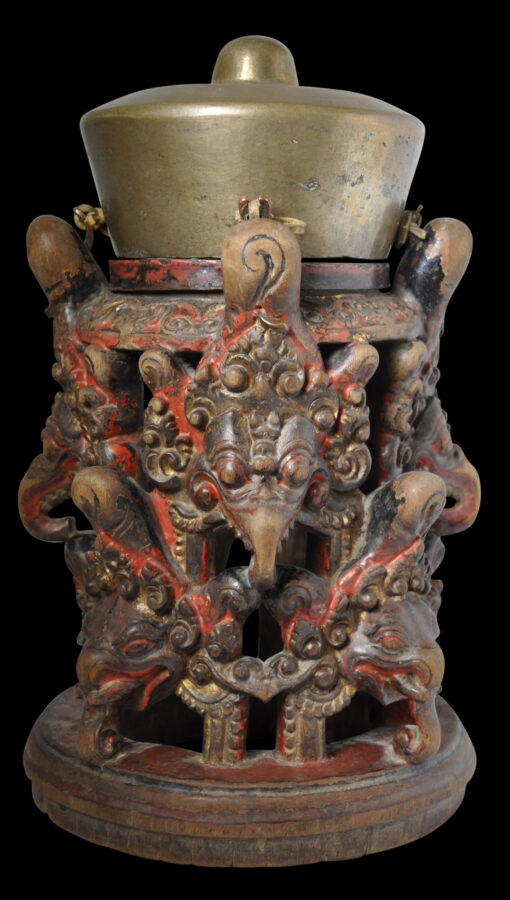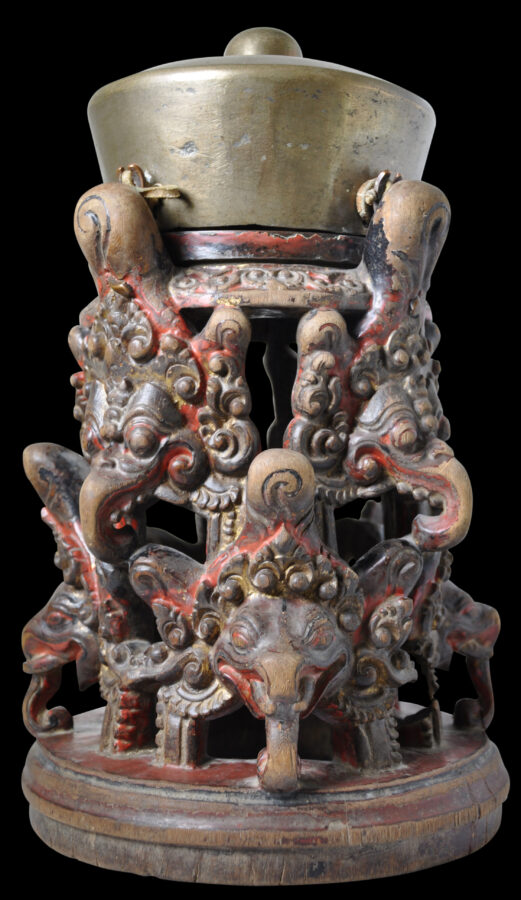This wooden stand and gong is superb for the quality of its carving and its obvious age. The sides of the stand are pierced and carved with repeated Balinese elephant face (karang asti) motifs, each carved without a lower jaw, and coloured with reds and blacks and with traces of gold leaf. The cast brass gong is attached to the stand by means of strips of hide.
This type of gong, which is mounted and played horizontally rather than the more conventional vertically, is known as a kempli. It is struck on the boss with a hard mallet to keep the beat for all of the other gamelan players. The kempli itself is not supposed to make a loud sound; indeed the way in which it is mounted is designed to absorb some vibration. Another name for the kempli is the kajar.
The example here is elegantly composed, compact, and has a wonderful sculptural aesthetic. It has an excellent patina. There are small losses to the carving but these are old and the losses themselves have patina. It dates to at least the nineteenth century and quite possibly earlier.
References
Ramseyer, U., The Art and Culture of Bali, Oxford University Press, 1977.








